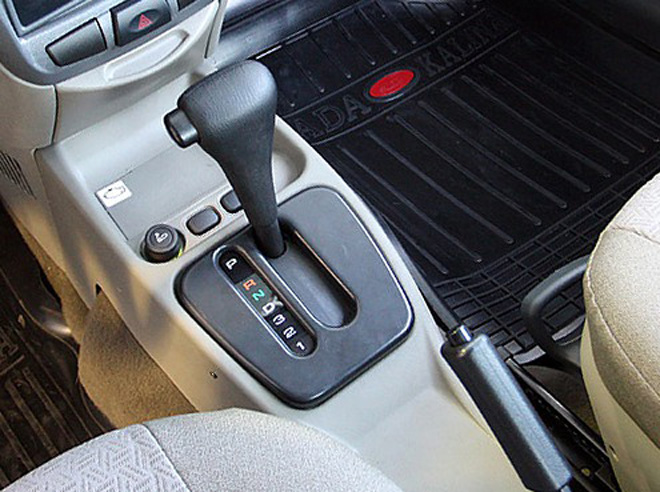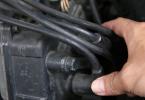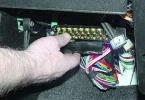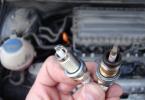
It's no secret that with modern traffic, more and more motorists, regardless of the make and model of the car, are choosing an automatic transmission. The popularity of "automatic" is quite logical and understandable, however, along with the increase in the number of cars equipped with automatic transmission, the number of drivers who are able to handle three pedals is decreasing. In addition, special driving schools have appeared, where training is carried out only in vehicles with an "automatic". I do not argue that a car equipped with an automatic transmission is easier to operate, however, it requires increased attention and especially careful care, which for many opens only after a breakdown.
In order for your car with an automatic transmission to serve you longer, you need to remember that there are a number of features of operating cars with this type of transmission.
First of all, let me remind you that an automatic transmission is a very complex mechanism that frees the driver from many hassle associated with driving, but it can also cause considerable difficulties if it is treated carelessly. In terms of complexity and cost, repairing an automatic transmission can be compared to repairing an engine. In order to prevent this and not to reduce the resource of your box, you need to know some rules of operation and maintenance of the "automatic".
In a word, if you follow a number of rules and remember simple rules, you can extend the life of your box, and the car as a whole.
The oil is normal - you go boldly
Note that it is transmission oil that is the main driving force of any automatic transmission. True, the boxes are very critical to various oils, so I recommend choosing an original high-grade gear oil for your car, which contains a number of high-quality additives. As a rule, the oil bottle should be labeled with the abbreviation JAC or ATF, which means "automatic transmission fluid". Most experts warn that the use of other fluids is highly undesirable and even dangerous for the gearbox, that is, it can simply damage the gearbox. Therefore, do not save on transmission oil, especially since it does not need to be changed so often - on average, once every 80-90 thousand km. mileage. Let me remind you that the oil in the box controls the transmission of torque, helps in controlling the hydraulics, regulates the operation of the brakes, and helps in the process of cooling the moving parts of the car.
Just as important as the quality of the transmission oil is the quantity, which must be checked periodically. The oil level in the box can be checked either with a dipstick marked with full marks, or with a special sensor, if there is one in the car. As for the dipstick, some automatic transmissions are equipped with a built-in dipstick, the oil level of which can be checked at the service. Do this a maximum of every 60 thousand kilometers - preferably even more often.
However, like any part, the automatic transmission can give symptoms of insufficient oil. The most common symptom is wheel slip and should not be neglected. If you ignore the problem, you can cause more serious problems - so in the service.
Cars equipped with an automatic transmission hold an average of 6 to 10 liters of transmission oil (front wheel drive vehicles) and 7 to 14 liters (rear wheel drive vehicles). Each car model has its own unique scheme, so it is better to find out about the required quantity in the service book or in the service of an authorized dealer.
How the "machine" breaks down
We have already noticed that an insufficient or even excessive amount of oil can become the cause of an automatic transmission breakdown. However, there are many other reasons for the uncertain or incorrect operation of the automatic transmission. The most common among all are those breakdowns that are associated with the malfunctioning of the torque converter. This mechanism is responsible for the engagement of the motor with the main shaft of the box, and it can break down due to improper operation of the car. If such a problem has arisen, then it is better to contact a specialist, since you will not be able to fix the breakdown on your own.
Automatic box rules
Let's try to formulate a number of rules that will help extend the life of your automatic transmission. The main thing is not to forget about regularity. Automatic transmissions are not designed for harsh actions (except for boxes on powerful or sports cars), which should become the rule for a driver driving a car with an automatic transmission. Sharp acceleration, shifting, braking and sharp turns can sooner or later lead to an increase in the distance between the friction discs, and later in the differential. As a result, the car will be accompanied by jolts every change.
Many experts recommend giving the box a break and thinking before changing the operating mode. For example, when parking, before turning on the "R" mode after "D", you need to make a short pause. After engaging the gear, you should wait until the car starts rolling at idle speed, and then add gas. Even if your car is equipped with a powerful engine, fast acceleration should be neglected, and you will not enjoy aggressive acceleration as often. You should not actively accelerate until the car's engine has warmed up - this is harmful not only for the box, but also for the engine as a whole.
Perhaps, the ban on frequent slipping should be recognized as a separate rule. If your car is stuck and does not move forward or backward, there is no need to pull claws and pull it back and forth on the "automatic". In the best case, the box will simply overheat, in the worst case, it will burn out. In this case, it is recommended to work with your hands ... In the sense that, if possible, it would be nice to push the car if it is stuck, say, in some hole or mud.
I note that all the listed rules and tips can help you extend the life of an automatic transmission, which will give you driving pleasure longer and keep your car in good working order.
Specifications
When driving a car, the driver constantly has to work with the clutch pedal and the gear lever, and this takes a lot of time and causes trouble for novice motorists.At one time, the most lazy ones had a question - is it possible to avoid these repetitive actions? This is how a construction appeared, which is called - automatic hydromechanical transmission, in which the selection and change of gears occurs automatically.
Probably, you should not waste time studying the device of this complex unit, since its servicing and repairs are possible only in specialized technical centers. But the fact that a car with an “automatic” has only two pedals (gas and brake) and the gears change by themselves, this should be understood and remembered. Now let's look at the rules for using an automatic transmission.
Rules for using an automatic transmission
The mode switch for the automatic transmission is called selector lever and has the following main provisions P, R, N, D. There are also provisions D2 (or L) and D3 (or S). There may be additional modes, for example W (winter - winter). Let's deal with these letters while looking at the selector lever switching diagram (fig. 39).
P (parking)- the lever can only be moved to this position after a full stop vehicle and fixing it with the hand brake. It is in this position that the engine should be started.
R (reverse)- you can turn on, while holding the brake pedal pressed and only after a full stop car (otherwise damage cannot be avoided).
N (neutral position)- means that the torque from the engine is not transmitted to the drive wheels. This position of the lever allows the engine to start. Do not turn on "N" while the vehicle is moving - damage is possible!
D (movement)- it is at this position of the selector lever that the vehicle moves under normal conditions. In this mode, as the speed of the vehicle increases or decreases, several gears are automatically changed without the participation of the driver.
D3 (S) - range of low gears. It usually turns on on a road with small ups and downs. Engine braking is more effective than in position "D"
D2 (L) - second range of low gears. It is turned on by the driver in difficult road conditions (mountains, off-road, etc.). Engine braking is more effective than in position "S".
The shift of the automatic transmission selector lever from position D to position D2 or D3 and vice versa can be done while driving.
Automatic transmissions of the last years of production can be additionally equipped with acceleration mode switches:
- N - normal,
- E - economical,
- S - sporty.
To increase the speed of movement, you just need to move right leg on the gas pedal and smoothly press it, and the gears themselves will gently switch from first to last as the speed increases. To reduce the speed of movement, it is enough to weaken the effort on the gas pedal or release it altogether, and the gears, again independently, will switch in descending order.
If you need to more actively reduce the speed or stop, then you must transfer right leg on the brake pedal, and just work gently with it. To start moving after a short stop (or after a decrease in speed), we transfer again right leg from the brake pedal to the gas pedal and the car starts moving. Moreover, the selector lever always remains in the position D(motion). It is not necessary to move it, except for long stops.
Thus, during the urban driving cycle, the driver only needs to move the selector lever of the automatic transmission to the position D(driving), and then with the right foot, pressing the gas or brake pedal to adjust the driving speed. All that remains is to work with the steering wheel, turn signals and, of course, the head.
For those who saw a clear "freebie" in the above, we can add that it is better to learn to drive with a conventional gearbox. Having learned how to drive a car with an automatic transmission, in the future you will be “doomed” to drive cars only with an “automatic”, since you will not be able to operate the clutch pedal correctly. And it is always difficult to relearn!



